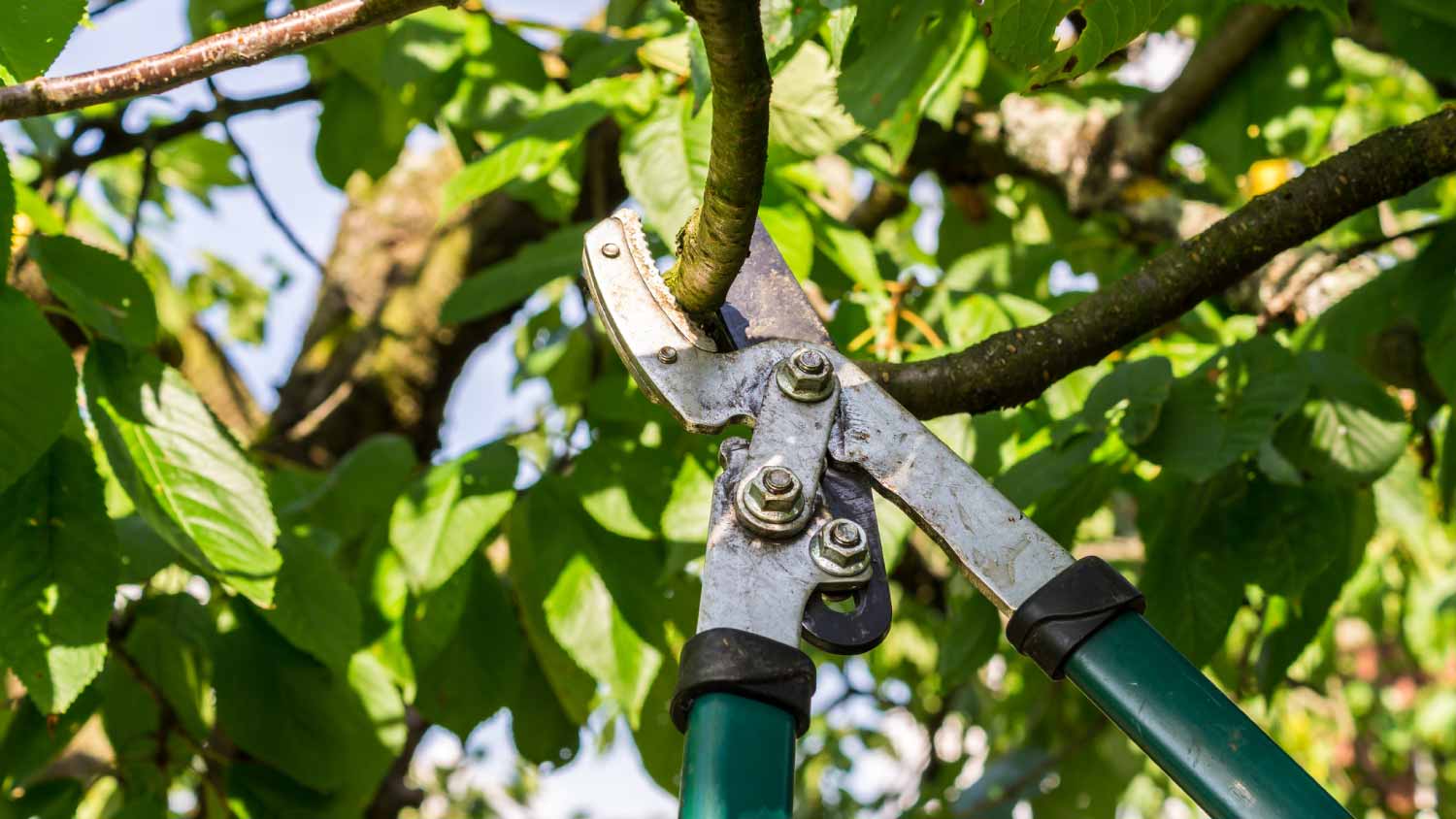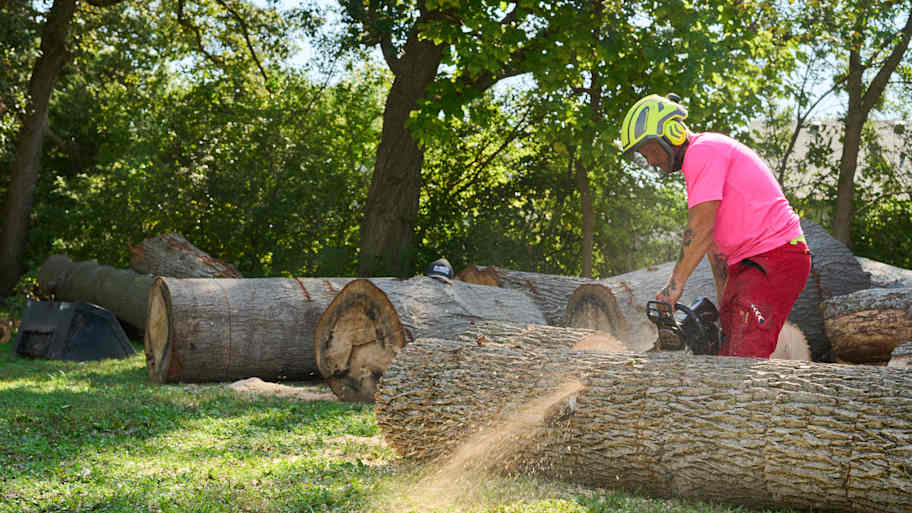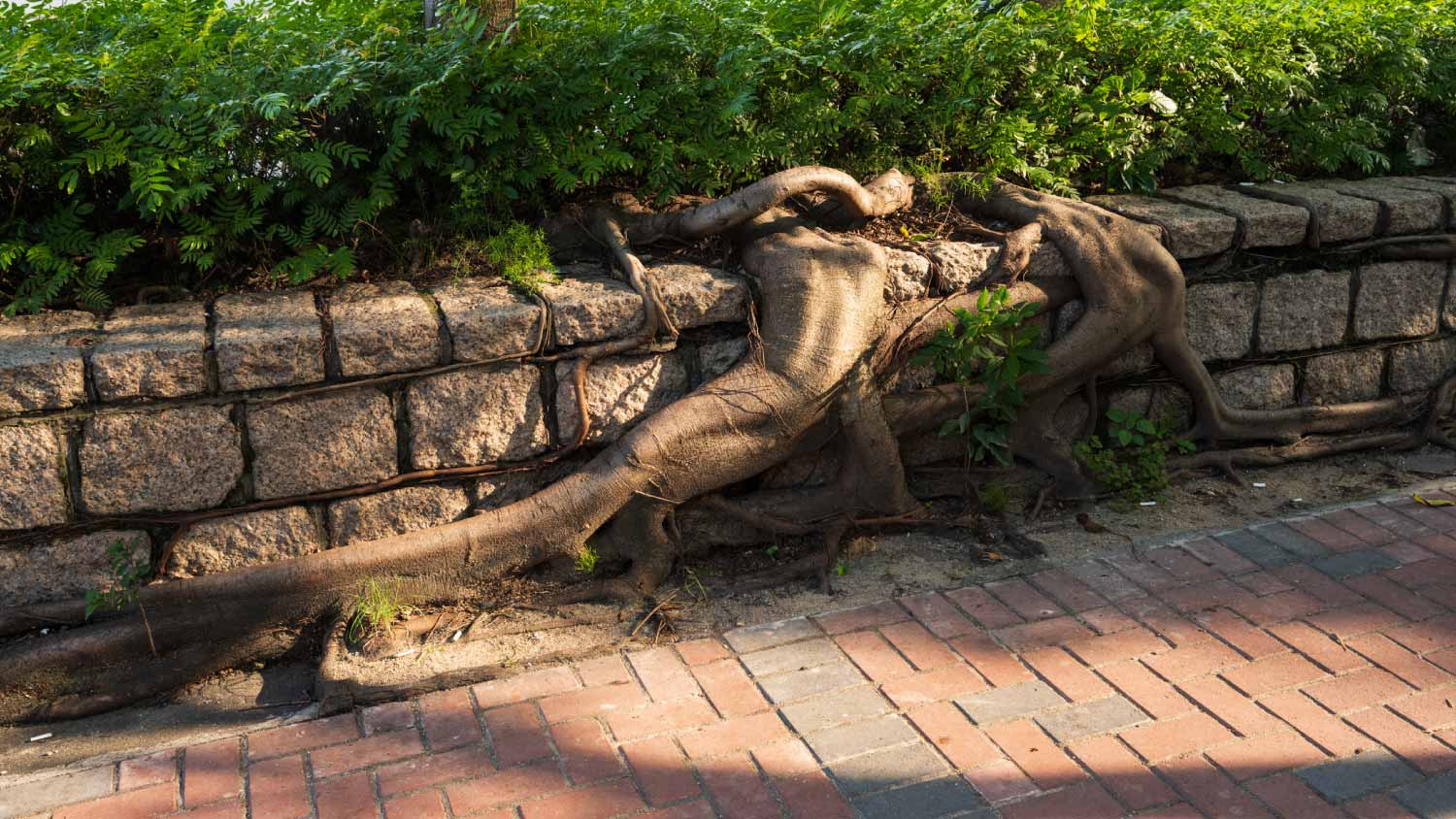
Find out how much it costs to plant a tree based on the number of trees, their size, where you want to plant them, and DIY versus professional costs.
Practice prudent pruning during these troublesome seasons


The worst times to prune most trees are early fall and late summer.
Pruning helps keep trees healthy, removes annoying limbs, and manages fire hazards, but it’s important to do it at the right time.
Pruning trees at the wrong time makes it harder for it to recover, and forces the tree into new, vulnerable growth when it should be entering its dormancy period.
It’s best to wait until a tree has completely gone dormant before pruning, but the timing can vary depending on tree species.
Overgrown trees benefit from pruning to keep them tidy, healthy, and away from your home’s roof or wall. But what’s the worst time to prune trees, and how can you avoid this mistake? Even mild wounds during the wrong time of year can endanger your tree while making it difficult for the branches to grow back properly.
You should avoid pruning during the weeks before the tree goes dormant, and try to wait until the tree has already shed its leaves. Let’s dive into the specifics of when not to prune trees and when to hire a tree pruning professional for help.

You should avoid pruning trees in the early fall, late summer, and late spring to maintain a healthy, happy tree. Here’s why pruning doesn’t work during those seasons:
September and October are the worst months for pruning most trees. It’s the perfect storm of bad compatibility: Leaves haven’t fallen yet (so branches are heavier and more awkward to trim), but many trees have started going dormant. That means it’ll be more difficult for trees to heal from pruning, and they'll be forced to start vulnerable new growth at the worst time of year.
Late summer months like August are a bad time to prune trees for many of the same reasons as early fall. Trees won’t have enough time to recover before their dormant periods begin, and any new growth will be vulnerable to the cold weather. The end of summer is also a sporing season for fungal diseases like the dangerous oak wilt, and pruning gives fungi an easy way to infect vulnerable trees.
Late spring months like May and June round off the list of the worst times to prune a tree, as many trees are still in high growth phases and it’s best to let that season's growth peak and end before attempting any pruning. Late blooming trees in particular should be left alone until later in the year.
Arborists work year-round and can provide estimates throughout the season, so it’s better to call and have them come out early in the year if you’re hoping for a springtime prune. Giving the arborist company planning time for your pruning needs will help them meet time requests.

The best time to prune a tree is after it's fully gone into dormancy, and the cold weather has discouraged pests and diseases from spreading. Most trees benefit from pruning in mid-to-late winter, so December and January work best, and don’t prune trees before November. It’s possible to prune trees in summer too, but it takes a little more care.
If you have a newly planted or very young tree, the worst time to prune is at all. New trees need time and plenty of water to grow unhindered, and you shouldn’t trim or shape them until they have a few years of growth and are well established. Some trees like maples, birches, walnut trees, and elms are notorious for “bleeding” or producing a lot of sap when they’re pruned in colder months. That’s not necessarily dangerous for healthy trees, but if you want to avoid this kind of bleeding, prune those trees at the height of summer.
The worst (and best) times to prune your tree are influenced by several additional factors. Pay attention to these details when scheduling your pruning work:
Flowering times: If you have flowering trees, understand their cycles and only prune after a tree has finished blooming. For example, early blooming trees like apricot, flowering plum, ornamental cherry, and magnolia tend to bloom very early. Instead of pruning in later winter, it’s often best to let them finish their flowering cycle.
When trees drop leaves: If you have deciduous trees, it’s always a good idea to wait to prune until they drop their leaves. You can gauge the shape of the tree more easily, the branches are easier to cut and move, and it’s a sign that the tree has gone into dormancy.
Diseased or dead branches: Diseased and dead branches are an obvious risk. They can infect other trees or present a falling danger. The normal pruning rules do not apply here, so cut these branches as soon as you find them. That applies to limbs damaged from winter storms, too.
Tree with a dangerous disease: If you’re pruning to remove signs of a disease from a tree and encourage its survival, you shouldn’t wait at all. Cut the diseased limbs quickly and remove them to help the tree and prevent the infestation from spreading. Be prepared to remove the tree entirely with help from a professional.
Tree species: Individual species characteristics also inform the best time to trim. Research your tree species to see when the experts recommend pruning back branches.
You can DIY tree pruning if you have the proper tools, a sturdy ladder, and enough time. It’s a great way to save money, especially for smaller trees that are easier to tackle. But if you have an especially large tree, need to prune very large branches, or need to prune many trees in your yard at the same time, then hire a local tree pruning professional.
If you are hiring a local landscaping company, the price will depend on the number and size of your trees. The average is around $460, but you can expect to pay anywhere between $270 and $1,800.
From average costs to expert advice, get all the answers you need to get your job done.

Find out how much it costs to plant a tree based on the number of trees, their size, where you want to plant them, and DIY versus professional costs.

The cost of tree stump removal depends on size, removal method, location, and more. Our guide will show you how much stump removal costs.

Discover the average tree maintenance cost, key price factors, and tips to save. Get expert insights to plan your tree care budget with confidence.

Follow these tips to learn how to find a good tree removal service. Doing a little research can help you save time and money when you need to say goodbye to your trees.

Are there insurance requirements for tree services? Whether you’re having your trees trimmed or finally removing that old oak from your front yard, you’ll want to make sure your tree company or contractor has these two types of insurance, at minimum.

If you’re wondering if cutting tree roots will kill your tree, the short answer is it depends. Read on to figure out how to eliminate roots without affecting your tree’s health.